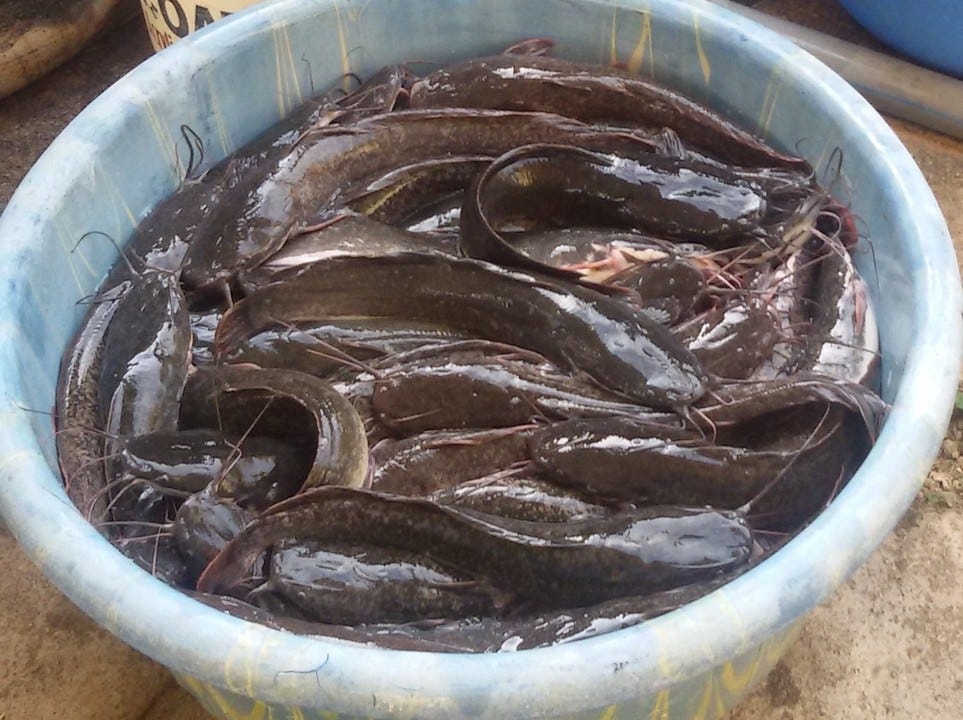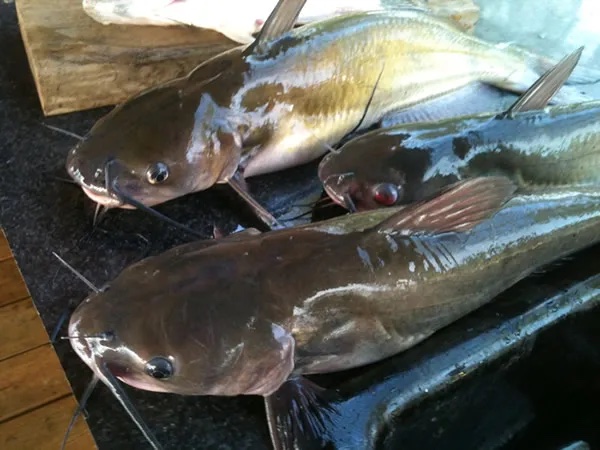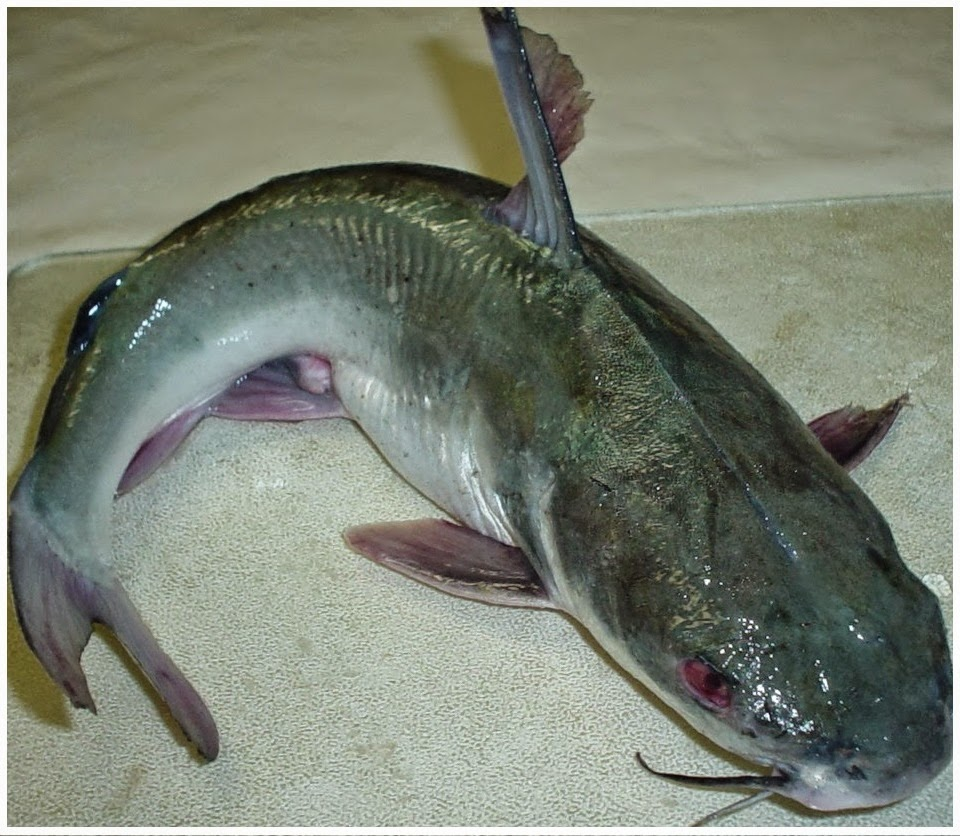Catfish are unique among fish species due to their lack of scales, which is typically considered a defining characteristic. Instead of scales, catfish possess spines in the front of their fins and a fleshy, ray-less posterior fin known as an adipose fin.
Nowadays, catfish is gaining popularity as a go-to choice for fish worldwide. Many households consume catfish for its flavour, high protein content, and Omega3 benefits. Nevertheless, it is worth noting that not all catfish types are equally delicious. Thus, it is crucial to identify the most common catfish varieties available for consumption and their availability in the global market.
This post aims to help catfish farmers identify the best types of catfish for rearing and tap into the many benefits of catfish farming.
As a farmer, it’s important to research which species of catfish are marketable in your local area.
The catfish population has been incredibly diverse throughout history, with nearly 3,000 known species. They rank among the top two or three most diverse vertebrates, and surprisingly, one out of every twenty vertebrates and one out of every ten fish species is a catfish.

Most Common Types Of Catfish in Nigeria And Their Scientific Name
Did you know there are more than 3,000 different types of catfish worldwide? However, we’ll focus on the seven most common types and their scientific names. These seven species are widespread, likely due to their taste and market value. Check out the list below, which includes famous aquarium catfish for fish-keepers and some giant catfish species.
Blue Catfish:
The Blue Catfish is a well-known catfish with various other names, such as Mississippi White Catfish, High Fin Blue, and Humpback Blue. Its scientific name is Ictalurus Furcatus, derived from the Greek word for “fish cat” and the Latin word for “forked”, which refers to its tail fin split into two.
Channel Catfish
The channel catfish is typically coloured olive-brown or slate, with hints of blue or grey on the sides. Their bellies and undersides are white to silver-white. One of their most noticeable features is the presence of small black spots all over their bodies, which is why they are called Ictalurus Punctatus in Latin, meaning “spotted”. They have a deeply forked tail, similar to the blue catfish, but with a different colour.
Vundu Catfish
The Vundu Catfish, scientifically known as Heterobranchus Longifilis, is easily identifiable by its dorsal fin, almost divided into a 60/40 split on its back. The remaining 40% of the fin extends down to its tail and is called the adipose fin, which gives the impression of additional flesh on its body. Another distinguishing feature of this species of catfish is its flat head. Keep this in mind when searching for Vundu Catfish.




Flathead Catfish
This fish species goes by several names, including Shovelhead Cat, Yellow Cat, Mud Cat, and Pied Cat. Its scientific name is Pylodictis Olivaris, with ‘pylodictis’ meaning “mudfish” in Greek and ‘olivaris” translating to “olive-coloured” in English from Latin.
The Flathead Catfish, often called “yellow cat,” has a skin that is predominantly yellow but also blends in olive brown, with light-coloured undersides and backsides ranging from light brown to pale yellow. Their skin is smooth and lacks scales, and they have sharp spines on their backs and cat-like whiskers around their mouth region.
The scientific name of this species is Pylodictis olivaris.
African Sharptooth Catfish
The Clarias gariepinus, commonly known as the African Sharptooth Catfish, is a popular freshwater fish in Africa due to its widespread consumption. Unlike other catfish species, Clarias lacks an adipose fin and has a long fin stretching from its neck to its tail without division. Their spherical and slightly tall head is another distinguishing feature. When you encounter a catfish with these characteristics, you can be sure it belongs to the Clarias genus.
Hybrid
The Hybrid Catfish is the result of cross-breeding Clarias gariepinus and Heterobranchus longifilis. The Hybrid Catfish, scientifically named Clarias X Heterobranchus, can be identified by its unique fin ratio of 90% back coverage and 10% fatty fin, as it possesses features from both species.
Cory Catfish
Corydoras, or cory catfish, are famous pet catfish often kept in aquariums. These catfish can reach up to 3 inches and have a reasonably lengthy lifespan of 20 years. They are freshwater catfish known for being timid, non-aggressive, and easy to care for. As omnivores, Corydoras catfish benefit from a balanced plant- and meat-based diet.
Related: How to Start a Profitable Catfish Farming Business in Nigeria.
Procuring the Right Catfish Fingerlings in Nigeria

Catfish is a prevalent species in Nigeria, both in the domestic market and for exportation. It represents more than 80% of the cultured species in the country and is also in high demand in other African countries. The popularity of catfish is due to its capacity to defy a wide range of temperatures, high stocking density, fast growth, and its sweet, mild taste.
Despite its popularity, the catfish farming industry in Nigeria is still in its early stages, with marketing, production, and distribution lagging behind demand. One significant factor contributing to the low production output is the inadequate facilities for hatcheries and fingerling production.
Securing high-quality fingerlings is crucial if you’re considering catfish farming in Nigeria or elsewhere.
Catfish Fingerlings

Fingerlings are newly hatched fish that have gone through the egg and larva stages and now have adult fish characteristics, specifically those of adult catfish. It takes about six weeks for them to become proper fingerlings around the size of fingers. There are two types of fingerlings: shooter fingerlings and juveniles.
Many fish farmers prefer shooter fingerlings for their speedy growth and beneficial genetic markers, which enable them to outpace other types of fingerlings. In contrast, juveniles are fingerlings that have matured, become sexually active, and can interact with other adult fish. They are more challenging and demanding than fingerlings and can cultivated in a pond system, but they require additional attention and nutrition, making them more expensive. Once a fish reaches a weight of 750 grams or 1 kilogram, it is considered an adult.
Fingerlings are produced in hatcheries where fish larvae are hatched into fry and then raised into fingerlings. The incubator can be indoors or outdoors and comes in different scales, such as small, medium, and large.
The life cycle of fish involves the stages of eggs, fingerlings, juveniles, and young adults. Usually, a male catfish and two adult females are selected to breed fingerlings, and these females can produce an impressive amount of offspring, ranging from 5,000 to 10,000. Fish farmers selectively breed larger fish to ensure that profitable genetic traits are inherited.
In Nigeria, the catfish fingerling production industry bears three types of catfish: Clarias, Heterobranchus, and Heteroclarias (a hybrid catfish).
Feeding fingerlings is crucial for their growth. Fish feeds range from 0.1mm to 9mm in size, and 2mm pellets are appropriate for fingerlings. Proper feeding is essential, as overfeeding or underfeeding could increase mortality rates. Additional elements that could contribute to the mortality rate comprise overstocking the pond and wrong sorting.
